#notechis scutatus
Text
I love tiger snakes. Tiger snakes love harsh lighting conditions. This one took a lot of work to get an acceptable shot.

Western tiger snake, Notechis scutatus occidentalis.
Sky Edwards
2023
Canon R7
Canon EF 100-400 L IS USM
#tiger snake#snakes#herpetology#snake photography#venomous snakes#australianwildlife#reptile photography#reptile macro#snake macro#skydarcyedwards#western australia#australian snakes#notechis scutatus
21 notes
·
View notes
Photo
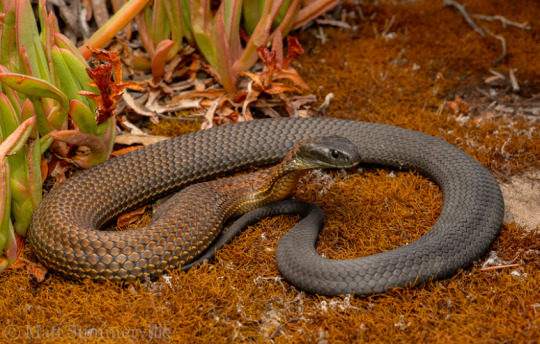
Tiger Snake (Notechis scutatus). Kangaroo Island, South Australia.
Photo: Matt Summerville [x]
6 notes
·
View notes
Photo
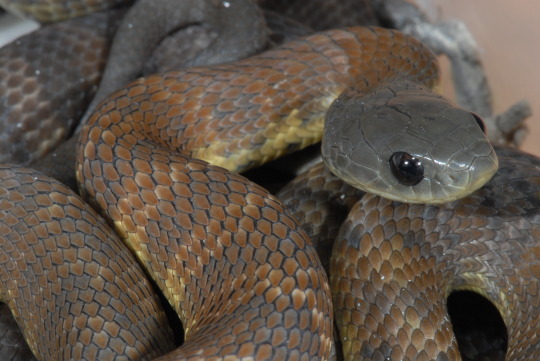
Sexy baby tiger snakes
6 notes
·
View notes
Text

Tiger Snake (Notechis scutatus), family Elapidae, Carnac Island, off Western Australia
Venomous.
photograph by Adam Brice
155 notes
·
View notes
Photo
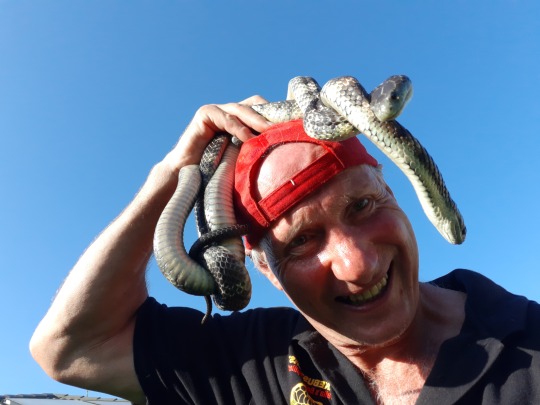
Melbourne snake catcher Ray Hoser and a wicked looking Tiger Snake Notechis scutatus. He does 24/7 snake catcher and snake removal work across the state of Victoria, Australia. Learn more at http://www.snakecatchersmelbourne.com.au and stay safe.
0 notes
Photo

Eastern tiger snake (Notechis scutatus) female, Yarra River corridor in suburban Melbourne, Victoria, Australia, in mid-summer. She is in a defensive pre-strike position with hood expanded, accompanied by loud hissing and sporadic gaping.
Photographer: Robert Valentic
#robert valentic#photographer#eastern tiger snake#notechis scutatus#yarra river#melbourne#victoria#australia#nature#snake
2 notes
·
View notes
Text
Tyger Tyger
It might seem to some people living abroad that Australia can be a scary place, a land chock-a-block filled with dangerous animals, and that’s not just the ones we let loose on Canberra. There are lots of things that bite and sting in this country and of course, even in the broad coastal waters that surround it. It’s all part of the natural order of the physical world with all the biodiversity…
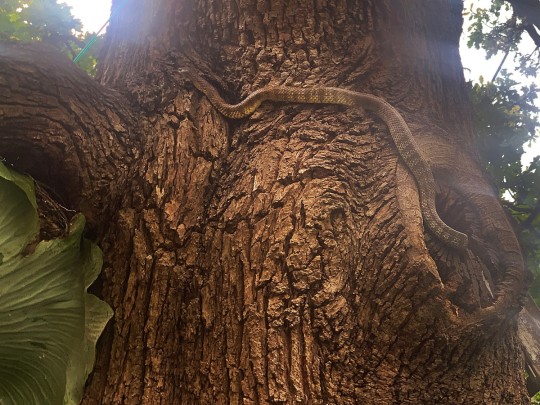
View On WordPress
#City of Banyule#Lady Jane Franklin#Montmorency#Notechis scutatus#Plenty River#Saint Patrick#Sir Henry Browne Hayes#Sir John Franklin#snake#Tiger snake#Vaucluse House#Yallambie
0 notes
Photo

Todays Snake Is:
The Tiger Snake (Notechis scutatus) is a venomous species found in southern Australia and surrounding islands. These snakes are known to be quite defensive, and will attempt to ward off perceived threats by flattening their necks and rearing up. Like many other Australian species, they possess a strong venom that is potentially very dangerous to humans and so, like all other venomous animals, are best admired from a safe distance.
(x)
517 notes
·
View notes
Text
Shattered!Dream Lamia
Name: Notechis
Species: Tiger snake(Notechis scutatus) and and Black mamba(Dendroaspis polylepis)
Size: 24 - 34 feet total, 2.8 - 5.8 feet standing (fullsize) 20 - 40 inches total, 5 - 9 inches standing (mini) 26 - 56 feet total, 6 - 8 feet standing(bara)
Venom: Yes
Personality: Mischievous, negative, sassy,
Likes: Horror movies, scary things, being cared about,
Dislikes: Feeling alone/ignored/forgotten,
Compatibility: They can control nightmares, and can make them better or worse, depending much they like the person they are affecting they can make them much worse or get rid of them completely, and while they don't mind helping their owners/other bitties they hate to be used just or this reason,
They can also feed off negative emotions and are known for lessening some mental illnesses(such as anxiety, paranoia, depression, and more) and are often adopted by people with these illnesses,
These bitties like scary things though they prefer to not be seen as scary, unless they dislike who sees them as such, then they thing its funny,
They are super sassy and sarcastic, often making little quips and are known for annoying other bitties,
They enjoy annoying others and it might as well be their hobby, though they rarely start fights,
Feeding habits: They do not mind any kind of diet, and will eat live meat, though prefer cooked and seasoned food,
Additional info: They are poisonous and should not be handled by hand! if attempted or touched by accident you should clean the area as soon as possible!
The poison easily seeps through the skin and the side affects vary and severity slightly, though it always worsen negative emotions, said emotions also vary but depression/sadness, paranoia and anxiety are the most common ones,
The poison is only in effect when handled skin to skin contact,
They are not always goopy! This does not mean they are not poisonous!
Zone: N/A, Inside
In Universe: They are seen as a strange bitty, and are often called a 'bad sans' type,
Difficulty: Basic - Intermediate
Features:
Main colors: Yellow, black,
Secondary colors: Black, brown, gray,
Extra: Small cobra like hood, though noticeably smaller and thinner,
Additional info: Brighter on the bottom and has thick dark stripes that can be mistaken for bands on top,
#bittybones#bitty info#bara bitty#lamia bittybones#lamia info#lamia bitty#adoptable#Notechis lamia bitty#Basic#Intermediate
20 notes
·
View notes
Text
Facility Records
Branch 1
SUBJECT: WCJE6Y (“Wilbur”)
Age: 19
Sex: M
Experiment Type: Ovine; 2% Ovis Canadensis
Donated: 14 September 1996
Status: Alive
[...]
-
SUBJECT: J9UNSK (“Tommy”)
Age: 11
Sex: M
Experiment Type: Murine; 2% Sciurus Carolinensis
Donated: 9 April 2004
Status: Alive
[...]
-
SUBJECT: SM78OI (“Techno”)
Age: 16
Sex: M
Experiment Type: Porcine; 2% Sus Scrofa
Donated: 1 June 1999
Status: Alive
[...]
-
SUBJECT: V0NJSI (“Tubbo”)
Age: 12
Sex: M
Experiment Type: Apian; 3% Apis Mellifera
Donated: 23 December 2003
Status: Alive
[...]
-
SUBJECT: 5YTQTR (“Schlatt”)
Age: 16
Sex: M
Experiment Type: Ovine; 3% Ovis Canadensis
Donated: 10 September 1999
Status: Alive
[...]
-
SUBJECT: QC4X61 (“Philza”)
Age: [REDACTED]
Sex: M
Experiment Type: Avian; 2% Buteo Buteo
Donated: 1 March 1988
Status: [REDACTED]
[...]
-
Branch 2
SUBJECT: TREJDE (“Fundy”)
Age: 16
Sex: F
Experiment Type: Vulpine; 3% Vulpes Vulpes
Donated: 10 October 1999
Status: Alive
[...]
-
SUBJECT: 8GIUV8 (“Niki”)
Age: 14
Sex: F
Experiment Type: Avian; 2% Cygnus Olor
Donated: 3 November 2001
Status: Alive
[...]
-
SUBJECT: HLBZN3 (“Eret”)
Age: 17
Sex: M
Experiment Type: Pardine; 2% Panthera Uncia
Donated: 9 January 1999
Status: Alive
[...]
-
Branch 3
SUBJECT: KKJCJ1 (“Ant”)
Age: 17
Sex: M
Experiment Type: Feline; 3% Felis Catus
Donated: 6 November 1998
Status: Alive
[...]
-
SUBJECT: VL87ZY (“Bad”)
Age: 20
Sex: M
Experiment Type: Avian; 2% Anas Platyrhynchos
Donated: 2 April 1995
Status: Alive
[...]
-
SUBJECT: L80UM9 (“Skeppy”)
Age: 16
Sex: M
Experiment Type: Avian; 3% Anas Platyrhynchos
Donated: 17 January 2000
Status: Alive
[...]
-
SUBJECT: Z8UG28 (“Quackity”)
Age: 15
Sex: M
Experiment Type: Avian; 2% Milvus Migrans
Donated: 28 December 2000
Status: Alive
[...]
-
Branch 4
SUBJECT: 28PC8F (“Ranboo”)
Age: 12
Sex: M
Experiment Type: Ursine; 3% Ursus Americanus
Donated: [REDACTED] 2002
Status: Alive
[...]
-
SUBJECT: IXFJ9A (“Puffy”)
Age: 17
Sex: F
Experiment Type: Ovine; 2% Ovis Aries
Donated: 18 September 1998
Status: Alive
[...]
-
Branch 5
SUBJECT: PSYZ4O (“Sapnap”)
Age: 14
Sex: M
Experiment Type: Ursine; 2% Ailuropoda Melanoleuca
Donated: 1 March 2001
Status: Alive
[...]
-
SUBJECT: U7F0QX (“George”)
Age: 18
Sex: M
Experiment Type: Murine; 2% Peromyscus Polionotus
Donated: 1 November 1996
Status: Alive
[...]
-
SUBJECT: T7IPU8 (“Dream”)
Age: 16
Sex: M
Experiment Type: Eusuchian; 3% Crocodylus Porosus, Serpentine; 2% Notechis Scutatus, Feline; 2% Acinonyx Jubatus, Lupine; 1% Canis Lupus
Donated: 12 August 1999
Status: Alive
[...]
-
Other
Name: Karl Jacobs
Age: 17
Sex: M
DOB: 19 July 1998
#maximum ride au#mcyt au#dsmp au#wilbur soot au#tommyinnit au#technoblade au#tubbo au#jschlatt au#philza au#fundy au#nihachu au#eret au#antfrost au#badboyhalo au#skeppy au#quackity au#ranboo au#captain puffy au#sapnap au#georgenotfound au#dreamwastaken au#karl jacobs au#mcyters#mcyt#mcytblr#dsmp#long post#random
38 notes
·
View notes
Photo

Tiger Snake (Notechis scutatus) Overland Track, Tasmania
Ross McGibbon Reptile Photography
1 note
·
View note
Text
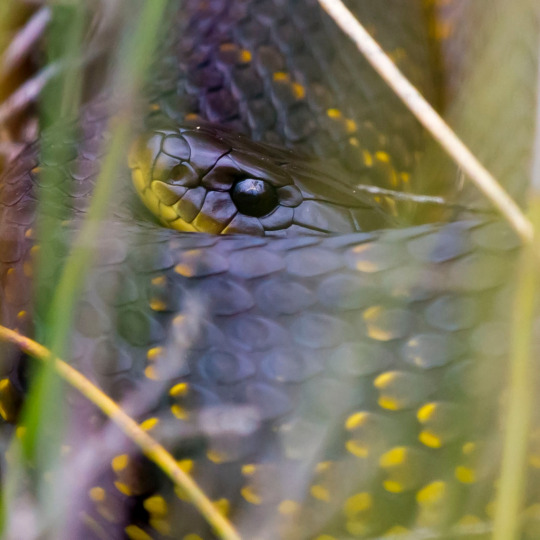
West Australian Tiger Snake, Notechis scutatus occidentalis.
I'm extremely pleased to have found this beautiful animal. I have previously had little luck finding snakes, even though dugites and tiger snakes are very common here. Spending a huge amount of my time in nature has helped. Being incredibly sneaky is important: their vibration sense is acute and they are very shy.
Canon 60D
Canon EF 100-400mm L IS USM
#tigersnake#herpetology#snakes#reptiles#wildlife#venom#venomous snakes#snake#australian wildlife#australianwildlife#wildlife photography
26 notes
·
View notes
Photo

A tiger snake that I was lucky enough to release back into bushland after it was found on an urban property!
Notechis scutatus, commonly known as the Tiger Snake, is a creature that inhabits bushland areas in southern Australia, as well as Tasmania. Despite the common name, tiger snakes (much like the one pictured) don’t have distinctive stripes akin to the tigers found in the African savannah. They can appear in a wide variety of colours and markings, and this is much to do with their surrounding area and other abiotic factors.
You may have heard that these creatures are aggressive, and there are ‘stories’ of people being chased by these snakes in particular. This is simple not true, and this I can say with multiple first-hand experiences. One example I can give is from this very photo. While, yes, this snake was mildly pissed off (after being caught and slightly jostled in a bin during transport), all it wanted to do was get away from us, and get back into the bush. It had every right to turn and ‘bite’ us, but fro every tiger snake I have encountered, this species is no more aggressive than any other venous snake species I have dealt with.
Australian venomous snakes have been villainized for being highly dangerous and aggressive. While Australia does have a high number of the most venomous snakes in the world, you’re very unlikely to come across them bushwalking, and even less likely to be bitten by one! For more information on the misconceptions of snakes in Australia, visit https://blog.csiro.au/are-australian-snakes-really-the-most-dangerous-in-the-world/
Reference: https://australianmuseum.net.au/learn/animals/reptiles/tiger-snake/
#western australia#herpetology#fauna#reptiles#snakes#snake blogging#tiger snake#australia#venomous snake#original content
0 notes
Photo

Australia 🐍🐍🐍🐍🐍🐍🐍🐍🐍🐍🐍🐍🐍🐍🐍 Tiger Snake (Notechis scutatus) #tigersnake #snakes #australia #watchyourstep #bushwalk #nature #wildlife #australianwildlife #australiansnakes #venomoussnakes #snakephotography #reptilephotography #naturephotography #wildlifephotography #ausgeo #mynikonlife #unique_australia #australia_shotz #etoe_2 #ethereal_moods #gloomy_side_views #charming_nature_ #ig_aussiepix #ig_discoveraustralia (at Murrindindi Scenic Reserve) https://www.instagram.com/p/B9HbRz2A6gC/?igshid=p09695oar6tb
#tigersnake#snakes#australia#watchyourstep#bushwalk#nature#wildlife#australianwildlife#australiansnakes#venomoussnakes#snakephotography#reptilephotography#naturephotography#wildlifephotography#ausgeo#mynikonlife#unique_australia#australia_shotz#etoe_2#ethereal_moods#gloomy_side_views#charming_nature_#ig_aussiepix#ig_discoveraustralia
1 note
·
View note
Text
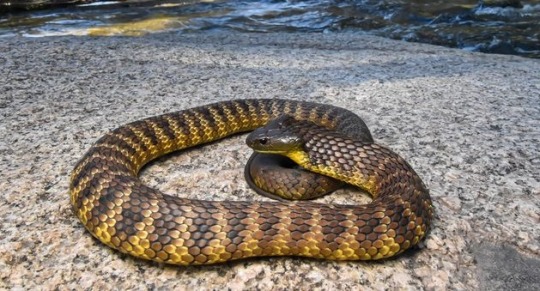
Tiger Snake (Notechis scutatus), family Elapidae, NSW, Australia
Venomous.
photograph by Kai Goold
105 notes
·
View notes
Text
Eastern Tiger Snake (Notechis scutatus) - 5th Most Venomous Snake in the World.
youtube
Eastern Tiger Snake (Notechis scutatus)
For more information go to: https://www.snakehunter.com.au
For information about Mark Pelley to go https://www.markpelley.com.au
Follow us on social media: Facebook: https://www.facebook.com/snakehunteraus
Twitter: https://www.twitter.com/snakehunteraus
Instagram: https://www.facebook.com/snakehunteraus
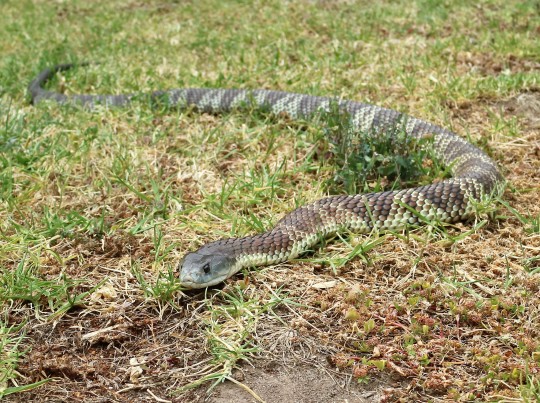
Most of the venomous snake call outs I receive in Melbourne are where someone has spotted a tiger snake in their home or backyard. This snake (depending on which scientific journal you read) is ranked the 5th most venomous snake on land in the entire world.
They are extremely common in Victorian back yards so it would be good to learn a bit more about them. No two eastern tiger snakes look exactly alike. There are significant variations of colour from brown, black, grey, yellow with alternating shades of dark and light bands across the snake. Bandings however are not always visible. Across Melbourne, I have found more yellowish bellies occur in snakes from Kinglake and snakes appear to be more grey and brown colour from East Melbourne suburban areas however this is only an observation.
Tiger snakes can have shorter and broader heads compared to brown snakes and are typically found at 1 – 1.5 metres long in Melbourne however I have caught tiger snakes easily over 2 metres long.Eastern tiger snakes are in the top 5 most deadly snakes of the world. They are very active during the day however can be found hunting and night time. When threatened, the tiger snake will flatten its neck and raise its head similar to a cobra. This is a defensive posture but the tiger snake will bite if harmed, touched or you feel threatened.
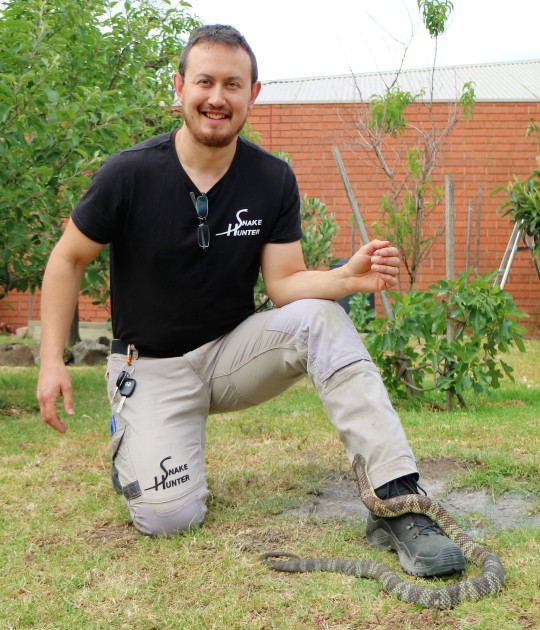
When looking for a tiger snake, don’t always look at the ground. Tiger snakes habitually raid bird nests and can be found climbing tree branches at incredible heights. It is not uncommon for me to find a tiger snake on a house roof or hanging from a fence. Eastern tiger snake venom is extremely dangerous. It contains POWERFUL:
1. Neurotoxins (Affect the brain and nervous system)
2. Blood coagulants (Affect blood clotting)
3. Haemolysins (Destroy the cell membrane of red blood cells)
4. Myotoxins (Cause severe muscle necrosis and paralysis including (diaphragmatic paralysis)
These different toxins act simultaneously on the body and symptoms of a tiger snake bite include:
1. Foot and neck localised pain.
2. Tingling
3. Numbness
4. Sweating
5. Rapid onset of breathing difficulties
6. This leads to paralysis
7. Death.

Eastern tiger snakes love to eat frogs. I have even caught one that died trying to eat a frog that was much too big for its mouth. If frogs are unavailable, tiger snakes will happily consume small lizards, birds and mammals such as rodents. Female Tiger Snakes are viviparous. They do not lay eggs but instead give birth to live young of around 30 baby tiger snakes. tiger snakes in every suburb of Melbourne I have caught snakes.
They are widespread in Victoria however appear to be absent from the semi arid areas of the north-west part of the state. Tiger snakes are common around swamps, wetlands, water courses, ponds, rivers and damns. Where food is plentiful, it is not uncommon to see large numbers of eastern tiger snakes in a small area. For some reason, I seem to find eastern tiger snakes in people’s homes more than any other type of snake. This is especially noticeable in Diamond Creek.
0 notes